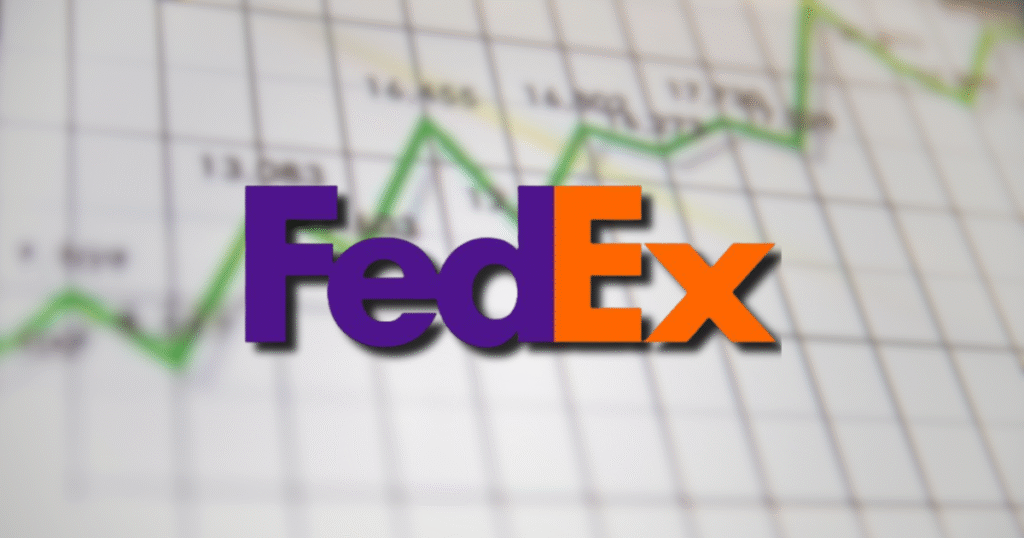TL;DR
The latest FedEx earnings call highlights a shift in global logistics for supply chain innovation:
- Tariff shocks are reshaping trade flows, with volume falling from China and rising across Southeast Asia.
- FedEx is building supply chain innovation through digital platforms like its “digital twin” of global trade flows.
- The future of logistics depends less on raw capacity and more on data-driven agility and customer-integrated solutions.
Supply Chain Innovation and Tariff Impacts
The first theme from the FedEx call is clear: supply chain innovation must now grapple with shifting trade dynamics.
- China to U.S. volumes fell sharply in May, with customs entries spiking.
- FedEx cut Asia-Americas capacity by 35% in just one month.
- At the same time, Southeast Asia demand is rising. A direct Singapore-U.S. route has been added to capture new flows.
This shows that logistics isn’t static. When tariffs move, volumes shift, and companies like FedEx must rewire capacity quickly. As The Economist notes, today’s trade landscape requires resilience, not just efficiency.
Supply Chain Innovation in Emerging Markets
FedEx’s strategy also reflects where growth is coming from:
- India remains a small revenue share, but it is scaling fast.
- Asia-to-Latin America trade flows are gaining momentum.
- FedEx’s Chinese sales team is now tasked with notifying counterparts abroad when customers diversify, building a live signal-sharing system.
This is supply chain innovation in practice: capturing new demand early and embedding cross-border intelligence into daily workflows.
Supply Chain Innovation Through Digital Platforms
The most striking part of FedEx’s commentary was not about planes or trucks, it was about platforms.
FedEx’s Digital Twin of Trade Flows
FedEx has built a digital twin of global trade. By turning decades of shipping data into a living model, the company can simulate supply chain shifts in real time. This goes beyond dashboards. It’s about building predictive capabilities into every decision.
Data-Driven Competitive Edge
Competition is no longer just about moving boxes fastest. It’s about who can run complex scenarios instantly and translate them into customer confidence. AI and data-driven workflows are becoming the backbone of operational resilience.
Workflow Integration
FedEx emphasized that its digital solutions are tightly integrated into customer workflows. Rather than forcing customers to adopt new systems, the platform connects directly to what they already use. That lowers friction and increases adoption.
Supply Chain Innovation vs. Raw Capacity
Logistics has long been measured in fleet size and warehouse space. But FedEx’s call makes clear:
- Raw capacity matters less than the ability to pivot overnight.
- Scenario planning and data-driven agility will define winners.
- Customers want reliable outcomes, not just delivery speed.
This is a critical shift. Supply chain leaders must now invest in digital infrastructure with as much urgency as physical assets.
What Businesses Can Learn About Supply Chain Innovation
Here are three key lessons leaders can apply:
- Resilience beats efficiency. Tariffs and trade shifts show why flexible routing and digital scenario planning matter.
- Emerging markets matter. Growth is no longer concentrated in one region; companies must build diversified exposure.
- Platforms win. Customers adopt tools that plug into their workflows, not stand-alone systems.
Companies that integrate digital tools into operations see stronger margins and greater customer stickiness.
FAQs on Supply Chain Innovation
1. What is supply chain innovation?
It refers to new methods, technologies, and strategies that make supply chains more resilient, efficient, and responsive.
2. Why is FedEx focusing on digital platforms?
Because logistics competition now depends on decision quality, not just delivery capacity. Digital platforms provide predictive and agile capabilities.
3. How are tariffs affecting supply chains?
They are shifting volumes from China toward Southeast Asia and Latin America, forcing logistics firms to reroute quickly.
4. What role does a digital twin play in supply chain innovation?
A digital twin models trade flows, allowing companies to simulate disruptions and optimize routes in real time.
5. How can smaller businesses adopt supply chain innovation?
By leveraging cloud-based logistics platforms, APIs, and scenario tools that provide agility without requiring massive infrastructure.
Conclusion: FedEx Shows Where Supply Chain Innovation Is Headed
The FedEx earnings call confirms what many in logistics already sense: supply chain innovation is no longer optional. Tariffs, shifting trade flows, and rising complexity demand that leaders rethink the balance between physical and digital scale.
The companies that win will be those that treat supply chain data as infrastructure, not exhaust. If your logistics strategy is still built on capacity alone, it’s time to add the digital backbone.
Related content you might also like:
- Tariffs Impact on Supply Chain Drives P&G’s Strategy Shift
- How Leaders Are Using AI to Make Smarter, Faster Decisions
- Tech Supply Chain Looking at Excess Inventory…
- The Changing Flow of Video – from the Tablet to the TV
- Shrinking the Supply Chain – How Technology Consolidates What we Get and When We Get It




